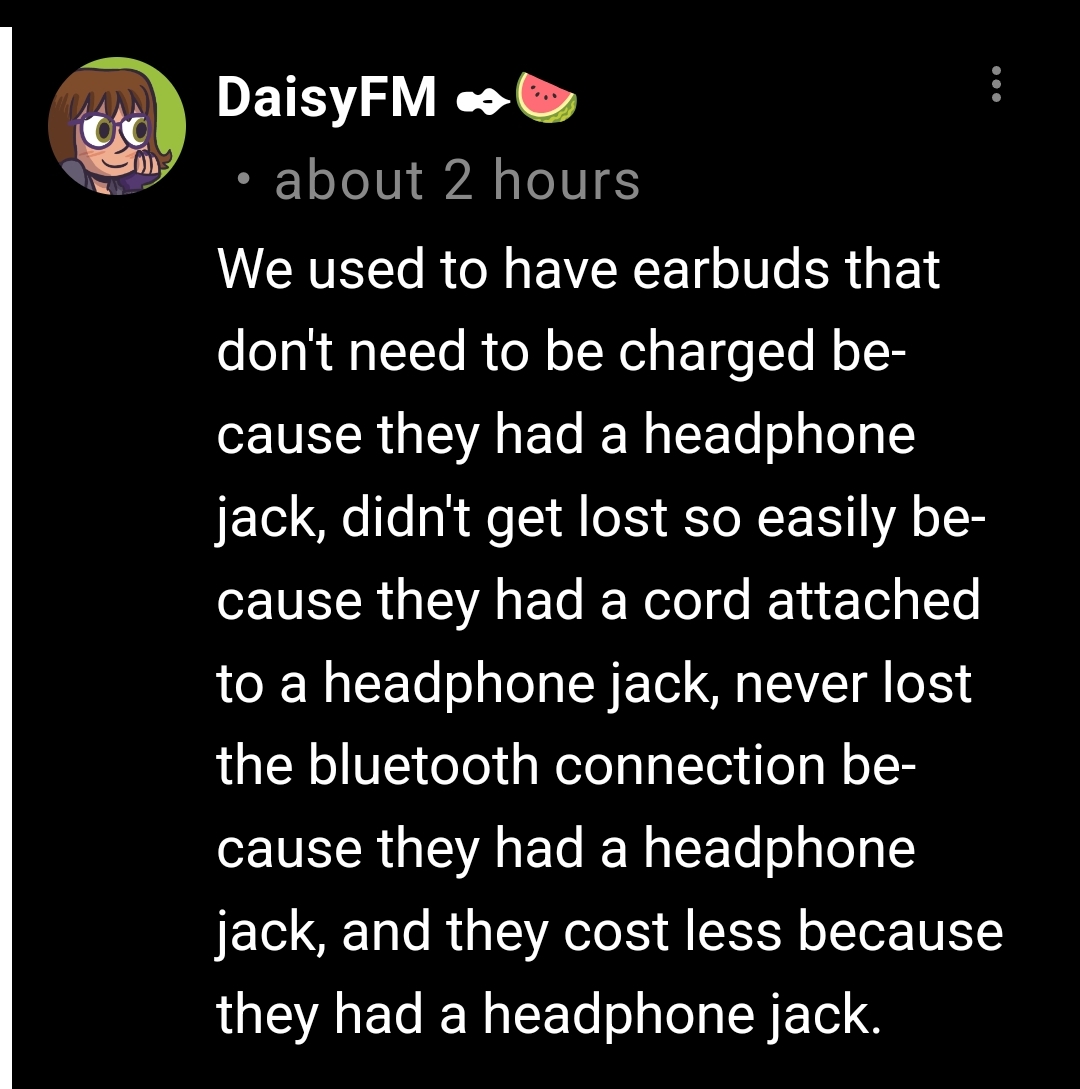this post was submitted on 08 Sep 2024
1641 points (95.4% liked)
Microblog Memes
5801 readers
2626 users here now
A place to share screenshots of Microblog posts, whether from Mastodon, tumblr, ~~Twitter~~ X, KBin, Threads or elsewhere.
Created as an evolution of White People Twitter and other tweet-capture subreddits.
Rules:
- Please put at least one word relevant to the post in the post title.
- Be nice.
- No advertising, brand promotion or guerilla marketing.
- Posters are encouraged to link to the toot or tweet etc in the description of posts.
Related communities:
founded 1 year ago
MODERATORS
you are viewing a single comment's thread
view the rest of the comments
view the rest of the comments

I don't get what people are doing who need waterproof phones, but I will accept that some people need this. To me it sounds far more like an edge case than people wanting wired headphones though, especially at the time they started removing jacks.
I really can't say for sure. It rains a lot where I live, so water proofing is a pretty big boon for me. I used to carry around a USB-C to headphone port adapter, but I never used it.
Valid. I've been thinking though. What's the problem with making a waterproof audio jack, if we have the USB C for charging?
I don't want to hate on wireless by any means. I often prefer wireless. But it's really fucking nice to have a power source connected and audio as well. It's very convenient. Especially if you have a dock and headset.
It just feels like such a redundant transformation that achieved nothing for the user.
There's adapters that allow charging at the same time. I'm not sure why audio jacks are difficult to waterproof. Samsung managed it on a few models, so it's certainly possible.
Personally I haven't had a situation where I wanted an audio jack in years, I assume the extra internal space goes towards things like longer battery life or slimmer form factors; not nothing, but also probably not a big deal for most people.
It seems like laptops are doing the same thing: all external ports are USB, and any specific needs get handled with dongles.
USB-C ports are pretty flexible, you can split one into many, use them for video & audio, use them for power delivery & networking, and they can transfer more data per second than cat5. It seems like manufacturers are trying to make it the one port to rule them all.